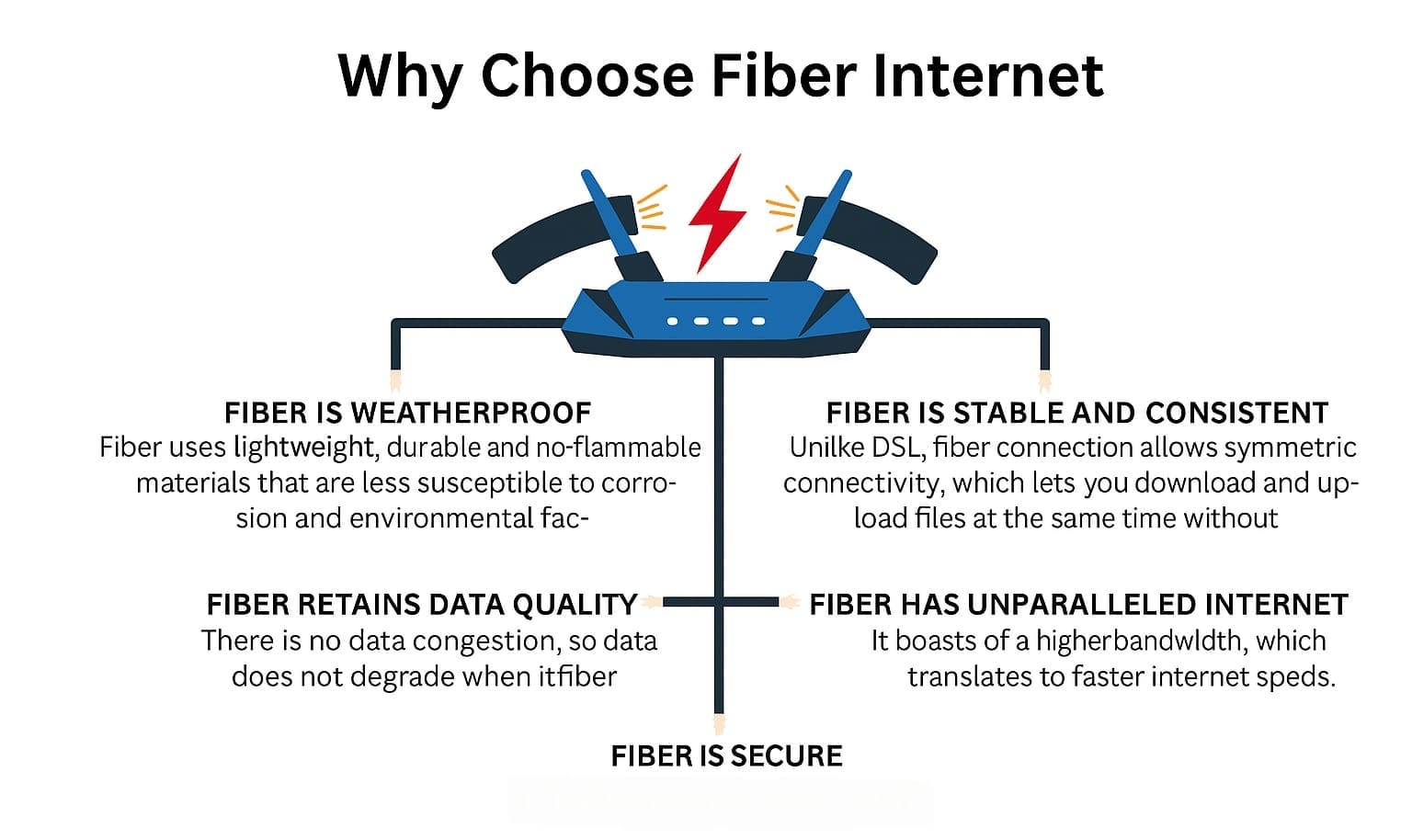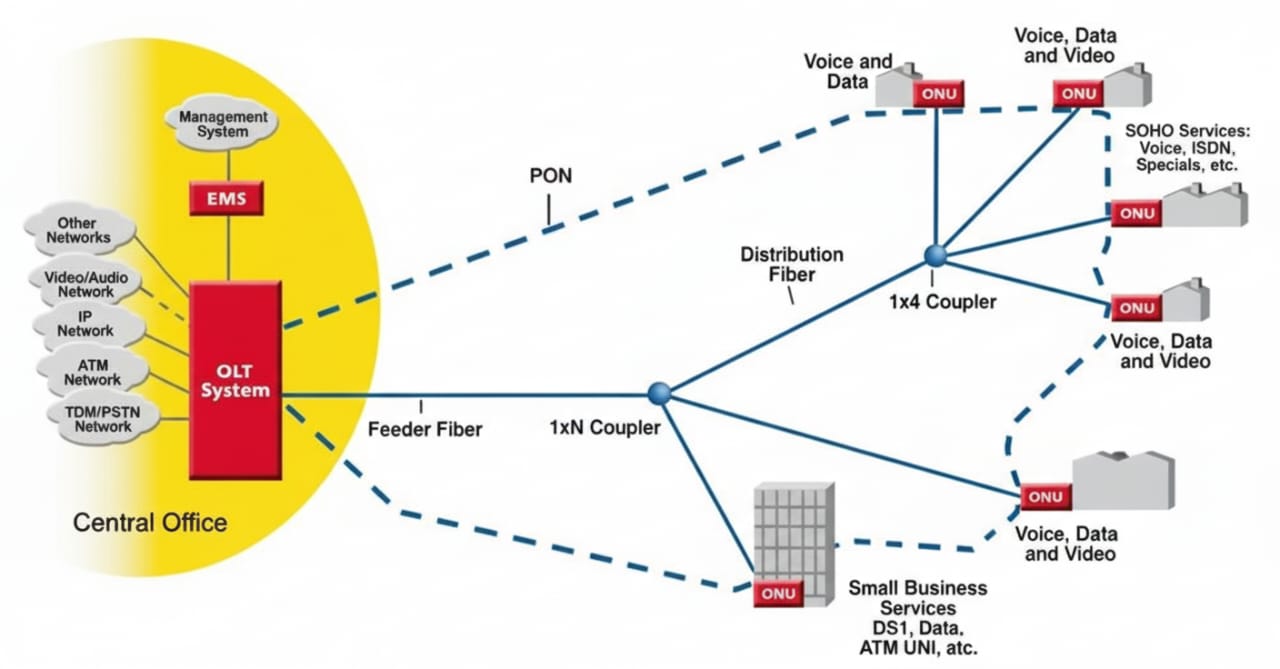Managed Broadband Solutions

Fibre Internet Connection
Fibre internet connection is a technology that transmits data using light signals through thin strands of glass or plastic called optical fibers. These fibers are about the diameter of a human hair and are bundled together inside cables. Unlike traditional copper cables that use electrical signals, fibre optics use pulses of light to carry information at extremely high speeds—up to about 70% of the speed of light. This allows fibre internet to offer significantly faster data transfer rates compared to other types of internet connections.

Fibre Broadband
Fibre broadband is a high-speed internet service delivered via fiber-optic cables, offering fast speeds typically from 100 Mbps to 1 Gbps or more. It provides greater bandwidth, lower latency, and enhanced security compared to traditional broadband. Ideal for small to medium businesses, it supports data-heavy applications like video conferencing and cloud computing. However, speeds can fluctuate due to shared bandwidth and it may not scale as quickly to very high demands. It is cost-effective but installation costs can be higher than traditional copper cable internet.
Our customers love us for
No Installation Charges
Super Fast Internet
Unlimited Downloads
Affordable Price
Broadband with OTT Included!
Instant Chat Support
Documents to keep handy!
Required Documents for Broadband Connection
To comply with government regulatory security measures, you are required to submit the following documents. We ensure that your information will remain confidential.
Address Proof
(Any One of the Following):
- Aadhaar Card
- Voter ID Card
- Ration Card
- Latest Society or Water Bill
- Property Tax or IT Returns
- Electricity Bill
- Mobile / Telephone Bill
- Bank Statements
- Rent / Lease Agreement
- Driver’s License
- Passport
- Gas Connection Bill
Photo Identity Proof
(Any One of the Following):
- Aadhaar Card
- Telephone (landline or post-paid mobile bill)
- Electricity Bill
- Income Tax Assessment Order
- Election Commission Photo ID Card
- Proof of Gas Connection
- Rent Agreement
- Photo Passbook of Running Bank Account
If Using an Office Address for Billing:
- Proof of Address of the Existing Company
- No Objection Certificate (NOC) from the Company
Additional Requirement:
One Recent Passport-Size Colour Photograph
